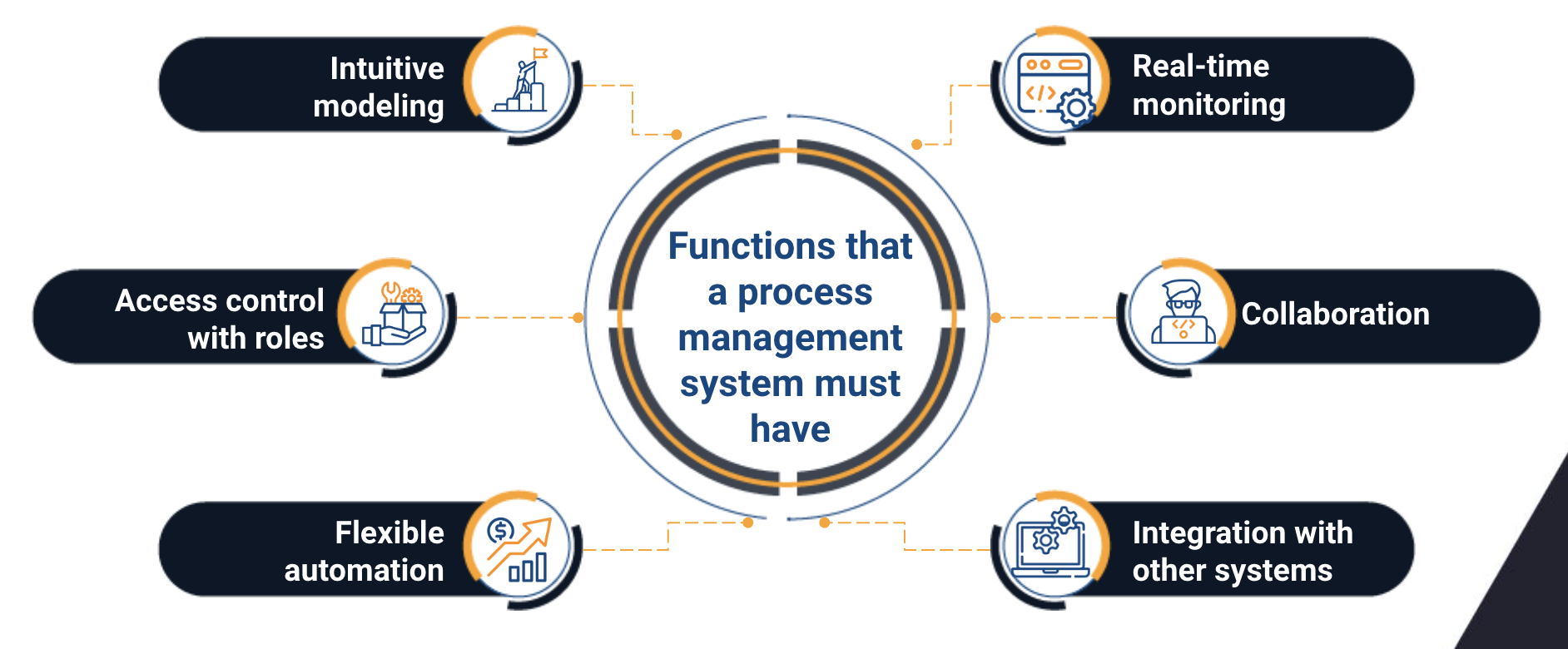
Process optimization is essential to ensure efficiency, agility and competitiveness in today's business world. To achieve this, organizations are increasingly turning to Business Process Management systems that allow them to model, automate, monitor and continually improve their business processes.
However, to get the most out of these tools, it is crucial that they have certain key features that we will talk about in this article.
But first… Why is it so important to have a Business Process Management system?
Process management is one of the fundamental keys to business success and the digital transformation of businesses, so special attention must be paid to this area.
“Without it (process management), transformation is reduced to a series of incremental improvements: important and useful, but not truly transformative”, they highlighted in an article in the Harvard Business Review magazine.
Functions that a good Business Process Management system must have
1. Intuitive process modeling
Good Business Process Management software should offer an intuitive and easy-to-use interface for process modeling. This involves the ability to create clear, understandable flowcharts that visually represent the steps, decisions, and interactions of a business process.
Additionally, it should allow for detailed documentation of each step, including roles, responsibilities, business rules, and key performance metrics.

2. Role-based access control
“Efficient business process management software can help protect any sensitive data entered into the system. You can choose to make access to a field editable, completely hidden, or read-only. This is a very convenient way to avoid errors or data breaches”, they explained in an Indeed article.
3. Flexible automation
Automation is one of the most powerful aspects of a business process management system. The software must allow the automation of repetitive tasks, the allocation of resources and the execution of workflows efficiently.
It is crucial that this automation be flexible and adaptable as business requirements change. This means the ability to configure dynamic routing rules, handle exceptions, and perform seamless integrations with other business systems.
4. Business rules management
Business rules are the guidelines that define how certain activities should be carried out within an organization. Effective business process management software must allow the definition, management and application of these rules in a centralized manner. This facilitates the standardization of processes, guarantees regulatory compliance and speeds up decision-making in real time.

5. Real-time monitoring and analysis
To continually improve processes, it is essential to have real-time monitoring and analysis capabilities. Business process management software should provide intuitive and customizable dashboards that allow users to monitor process performance, identify bottlenecks, and detect areas for improvement.
Additionally, it should offer advanced analytical tools to perform deeper analysis of the data and extract meaningful insights.
6. Collaboration and communication
Collaboration between teams is essential for the success of any initiative related to business process management systems. Therefore, the software must facilitate effective communication and real-time collaboration between different stakeholders. This includes features such as task assignment, feedback management, and automatic notification of important events.
7. Integration with existing systems
It is unlikely that an organization uses a single system for all its operations. Therefore, business process management software must be able to integrate seamlessly with other business systems, such as customer relationship management (CRM) systems, enterprise resource management (ERP) systems, and collaboration applications. . This integration ensures data consistency and process efficiency across the organization.

Types of business process management systems you can implement
There are several types of business process management systems that an organization can implement, each with its own characteristics and approaches.
Business process management system focused on integration
“This type of system focuses on processes that do not require much human participation. These processes depend more on APIs and mechanisms that integrate data between systems, such as human resource management (HRM) or customer relationship management (CRM)”, they explained in an IBM article.
Human-centered process management system
Unlike the integration-oriented approach to BPM, this type of BPM focuses on human interaction, especially in situations where approvals are needed. Intuitive user interfaces, along with drag-and-drop features, make it possible for teams to assign tasks to different roles, simplifying the assignment of responsibilities throughout the process.
Document-centric process management system
“It focuses on a specific document, such as a contract. When companies buy a product or service, it must go through different forms and approval rounds to develop an agreement between the client and the supplier”, they also added on the IBM portal.
Ultimately, the choice of the type of BPM system to implement will depend on the specific needs of the organization, its structure, its industry and its business objectives. It is important to carefully evaluate the available options and select the solution that best suits the needs and priorities of the business.
Do you need to implement a business process management system? At Rootstack, we have +14 years of experience supporting companies in their digital transformation. Contact us.


